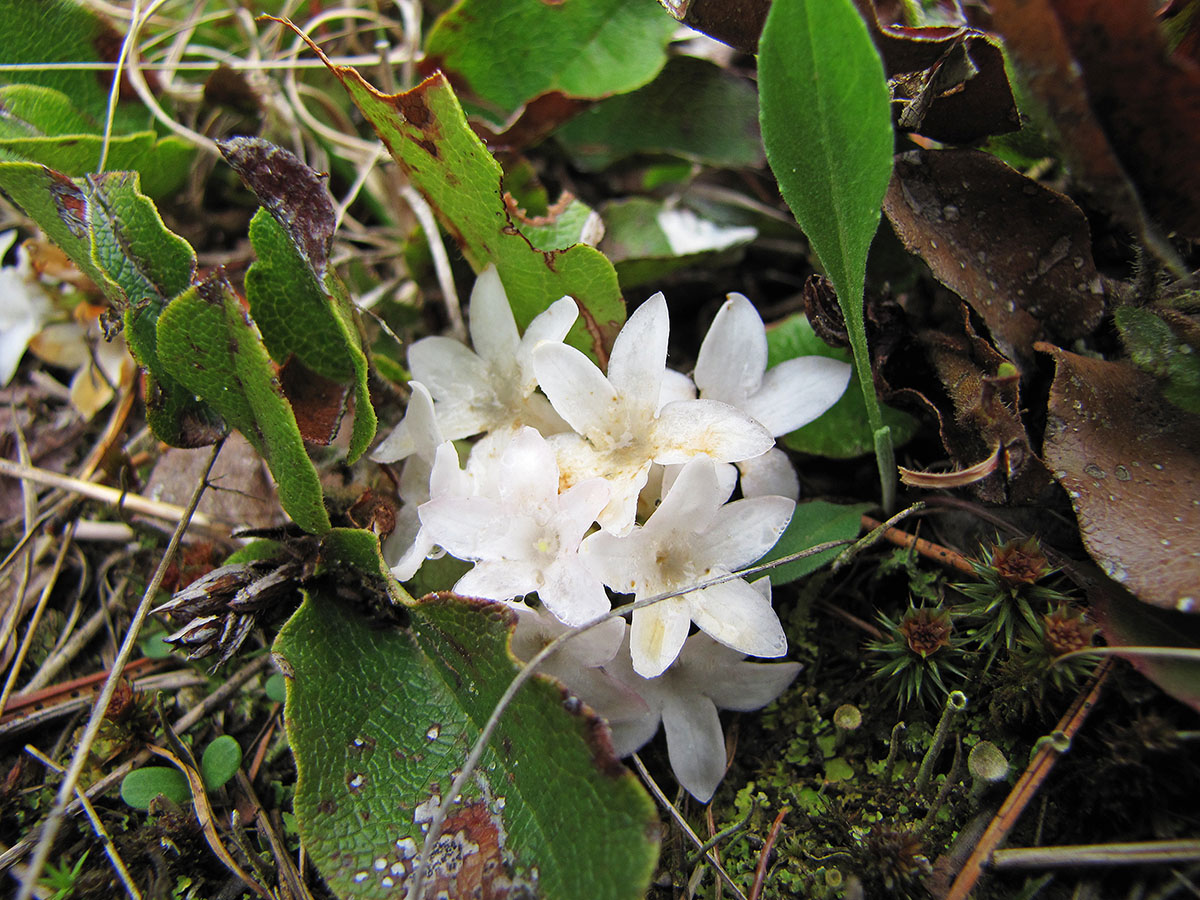FIELD NOTE: Epigaea repens (Trailing Arbutus)
For this native wildflower with an exquisite fragrance, one must search among the fallen leaves in early spring. Sometimes referred to as “Plymouth Mayflower” in reference to the fact that it was the first flower to cheer the hearts of the Pilgrim Fathers after the rigors of their first New England winter.
Epigaea repens, the mayflower or trailing arbutus, is a low, spreading shrub in the family Ericaceae. It is found from Newfoundland to Florida, west to Kentucky and the Northwest Territories.
The plant is a slow-growing, prostrate to sprawling shrub that prefers moist, shady habitats and acidic (humus-rich) soil. It is often part of the heath complex in an oak-heath forest.
Its stems are woody and the leafy twigs are covered in rust-colored hairs. The leaves are alternate, ovate (oval-shaped with rounded bases), evergreen, glabrous above and more or less hairy beneath, and borne on short rusty-hairy petioles.
The flowers are pentamerous, pale pink to nearly white and very fragrant, about .5 inches (1.3 cm) across when expanded, and borne in clusters at the ends of the branches. The calyx consists of five dry, overlapping sepals. The corolla is salverform, with a slender hairy tube spreading into five equal lobes. There are 5 stamens. The gynoecium consists of one pistil with a columnar style and a five-lobed stigma.
Family: Ericaceae – Heath family
Genus Common Name: Trailing Arbutus
US Native Status: Native
The genus name Epigaea, meaning “upon the earth”
There are three species in the Epigaea genus, one in eastern Asia (E. asiatica), one in southwestern Asia (E. gaultherioides), and this one, Epigaea repens, which is native to the eastern United States and Canada.
It is protected in New York.


